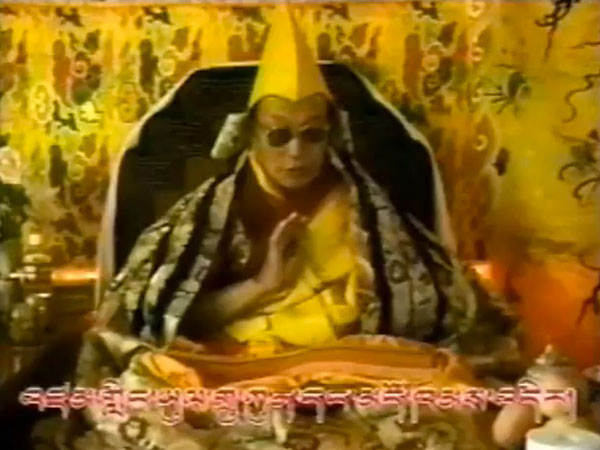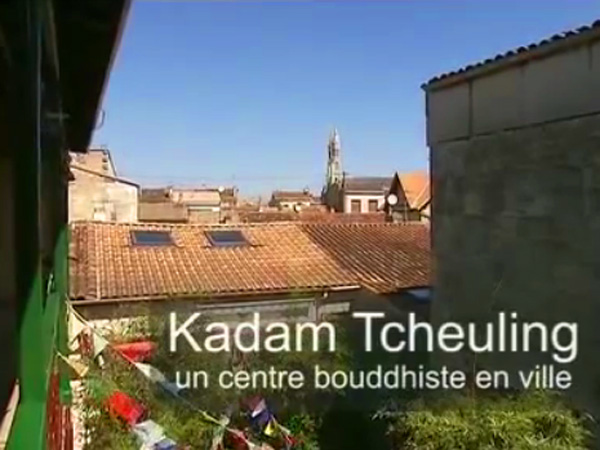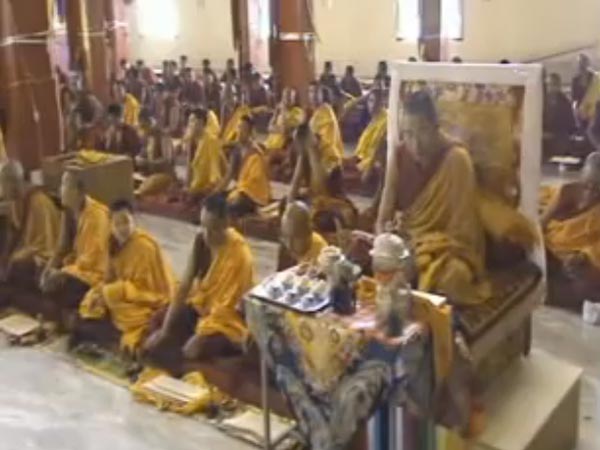DHARMA READINGS
| DHARMA DEMYSTIFIED: KAWANG - A CONFESSIONAL PRACTICE | | Print | |
 By Steve Lee Dharma Protector practice may appear to the untrained eye to be shrouded in the mist of mystery rendered thicker by the passage of time. However these practices accord tremendous benefits to the practitioners and by all written accounts, these practices are originated by and descend from the greatest of Buddhist masters. Readers' Comments
Time has not diluted the efficacy of the practice and to the ancient practitioner as it is to the modern one, the noble role of a Dharma Protector remains that of alleviating obstacles and creating favorable conditions in the mental constituents and physical environment of the practitioner so that his training in Dharma may grow and flourish. At the heart of a Protector kangsol or puja, lies the recitation of the kawang otherwise known as kangshak, which literally means the ‘clearing of obstacles’. This is a special confessional prayer which is based on tantric visualizations, the recitation of which is to purify what may be significant accumulated negative karma threatening to obstruct one’s practice. Therefore, corresponding to the amount of obstacles that need to be removed, the actual visualization becomes particularly graphic. However, one should dwell on its true and subtle meaning and not on its apparently aggressive language that appears vicious, until the meanings are revealed. It follows that if the negative karma that blocks one’s practice is forceful, then the puja to counter it has to be equally intense. The practitioner approaches the recitation of the kawang by visualizing the Three Poisons – Ignorance, Hatred and Desire which altogether encompass a myriad of other poisons such as delusions, negative karma, habituations and so forth. These negative elements are visualized in the form of a very large man or a woman. Then as the visualization continues, a dakini who is an emanation of Vajrayogini appears and she wields a cemetery chopper to slay that being who is the personification of our negativities. Then, she takes her chopper and slices the body in such a way that uncovers the inner organs. First, she drains the blood into an offering vessel. Then, she cuts out the organs of the five senses – the tongue, nose, ears, eyes and heart and arranges them neatly into a skullcup thus resembling a grisly floral arrangement. Then, she pulls the bones out, arranges them into a vessel and burns the bones like stacks of incense sticks. Next, she extracts the human fat from the corpse and pours it into bowl, inserts a wick made of the human hair and lights it. Then she collects the rest of the bodily fluids like the bile, urine and so forth into an offering vessel. Then, she chops the flesh and mixes it with barley flour and places it into another vessel as food. Finally, she pulls the thighbones, cleans it and fashions it into a trumpet before placing it into a vessel as well. While appearing grotesque at first, this part of the visualization is indeed a beautiful and meaningful gesture of transforming what is foul and turning them into sublime offerings. The blood represents the Water offering, the arrangement of sense organs represent the Flower offering, the crushed bones represent the Incense offering, the human fat set alight represents the Light offering, the bile and urine are transformed to represent the Perfume offering, the human flesh becomes the Food offering and finally the thigh bone becomes a trumpet to represent the Music offering. 
Wrathful offerings for Dorje Shugden These make up the wrathful sensory offerings which the dakini then offers to Dorje Shugden on the practitioner’s behalf. Huge amounts of negativities are purified when the dakini makes the offering to Dorje Shugden. In the Dorje Shugden kawang text, it is also said that we offer up various other sensual objects, seven royal emblems, various animals like horses, elephants, frightful yaks, sheep and dogs as mounts. Then, we also offer saffron robes, armor and shields. Along with the sensory offerings, we offer arrows, spears and various types of sharp weapons to Dorje Shugden. Essentially these are to request and create the conditions and causal karma for the Protector to come to our aid and fight our negativities, which are responsible for the obstacles and problems manifesting. Although not entirely necessary, it would be even better if the kawang recitations were accompanied by the symbolic physical representation of each sensory object offered on the altar. The row of wrathful sensory offerings begins with tea to represent blood, a wrathful flower, incense sticks that are stacked and crossed to represent the stack of burning bones, a candle to represent burning fat, beer to represent bile, urine and other bodily fluids, a fruit (or other representations) to represent the flesh and a conch shell or any musical instrument to represent the thighbone trumpet. Numerous recitations of the kawang are recommended especially for practitioners who are engaging in large projects and in particular those who are involved in activities that lead to the growth of the Dharma like the construction of a temple, monastery or Dharma center. Recitations of the kawang are also particularly effective to purify huge amounts of bodily karma of those who are going through an obstacle year and old age. Kawang is also particularly effective in clearing and stabilizing the mind when doubts and confusion arise. Finally, the kawang is also excellent as part of a daily sadhana. The bare minimum for a daily sadhana is the recitation of Nyirtoe (Trijang Rinpoche’s Praise, kawang, serkyem (Golden Drink offering) and the Protector mantra.) Kawang is not just a powerful confessional practice to purify our negative karma but also a way to develop a closer spiritual bond with Dorje Shugden. The clearing of obstacles makes it effective for Dorje Shugden to help us since it is our own negative karma that blindfolds the Protector. Kawang is also recited to invoke the Protector to create the necessary conducive conditions for our practice, and hence it is a very important practice for any Dharma practitioner.
KawangHUM!
|
OTHER DHARMA READINGS
- A GUIDE TO SPIRITUAL PRACTICE
- DHARMA DEMYSTIFIED: NAGARJUNA, THE FOUNDER OF THE MAHAYANA TRADITION
- DORJE SHUGDEN ON BLACK HORSE
- WHY MANJUSHRI MATTERS
- DHARMA DEMYSTIFIED: THE ENTHRONEMENT OF DORJE SHUGDEN









